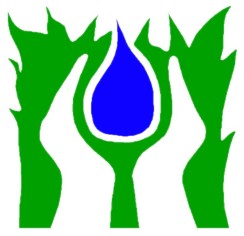Living Water
Treatment of Wine Effluent and Waste
In 1995 we were invited in by a French environmental consultant to help her develop an ecological solution to wine effluent. This was needed urgently given that traditional practices and conventional technology was not sufficient to maintain water quality in the local rivers and meet European (EU) legislation for water quality. Given our experience with treating the effluent from the whisky industry and having studied the effluent and practices in a number of vineyards we decided to seek European funding to develop a solution for vineyard effluent.We received an EU grant for our project "Ecological Treatment and Transformation of Effluent from the Drinks Industry into a Resource for Re-use, Irrigation and Land Reclamation". This involved studying whisky and wine production processes in Scotland, Ireland, France, Greece and Portugal for a period of one year to develop the solutions required.
This successful project led to an experimental treatment system being installed in Chateau LaChapelle-Maillard, an organic (biodynamic) vineyard in the Bordeaux region of south west France. This system consists of a straw filter to remove solid material, three constructed wetlands in series and a planted soakaway. This system has been monitored by Centre Technique Interprofessionnel de la Vigne et du Vin (ITV) located in Epernay, France.
Wine effluent is the result of cleaning the vats and machinery used in the vinification process. While not an obvious pollutant, such effluent contains sufficient sugars, alcohols and tartaric acid to constitute an oxygen sink and hence a danger to the environment if discharged without treatment. There are three distinct processes in the production of wine and each produces its own pollutants.
To indicate the loading we will use the figure of chemical oxygen demand, COD (the oxygen required to decompose a given sample, through chemical oxidation). Biochemical oxygen demand (BOD5) ( the oxygen required to decompose a sample biologically over 5 days) in vineyard effluent is typically 50% of COD.
Grape Juice Extraction (grape harvest) and Pressing: During this process stalks and leaves are removed; crushed grapes are stored in vats to start the fermentation. Wine effluent is a result of washing the equipment and consists mainly of skins, yeasts and sugars. Crushed grapes are pressed to extract juice, solids are sent for distillation. The effluent is a result of washing equipment and is mainly fermentation products. COD = 9,900 mg/l
Racking: During racking wine is decanted and the remaining liquor and sediment has a COD = 5,300 mg/l
Removal of Tartrates: Crystals of tartaric salts that accumulate on the walls of the vats is expressed as BOD5. A range is expressed below:
35 kg soda = 42,500 mg/l BOD5. pH = 12.05
25 kg soda = 84, 670 mg/l BOD5. pH = 11.60
The average performance of the experimental wetland treatment system over nearly 3 years is 40 g COD / m2 / day while the peak is 130 g COD / m2 / day. The system consistently raised the pH. Our system has provided excellent results, for one vineyard but we need to develop the system to understand how to best size it so that it provides consistent results for a range of wine effluents.
We are presently working in partnership with ITV and are building two pilot systems near their laboratory to monitor and study the dynamics of the wetland system during the treatment of wine effluent and to improve the treatment system. We are also investigating the uptake mechanisms and effectiveness of pesticides and herbicides removal by these plants. Two vineyards have expressed an interest in having a full-scale experimental treatment system that we will design and will also be monitored by ITV. These experiences will enable us to develop and fine-tune our treatment system and ensure its effectiveness for champagne, white and red wines which all produce different strengths of wine effluent. We are presently working in partnership with ITV and are building two Another effluent produced on vineyards that are not organic is the residual pesticides or herbicides left in the containers and washing down from the spraying machines. Sometimes this is carried out on the vineyard and sometimes where the wine is produced which is not always at the same location. This becomes another problem requiring treatment.
Surface Water Management and Treatment from Vineyards
Frost is another problem highlighted by ITV on our visit to the Champagne region in France that is at the northern limit of wine growing. During March and April pesticides, herbicides and fertilisers, if required are sprayed onto the vines. Frosts also occur at this time of year. Water is sprayed onto the vines in order to keep the vines from freezing. This water washes off soil contaminated with pesticides, herbicides and fertilisers into a nearby watercourse. This causes water pollution. In addition, when pesticides or herbicides left in the containers and washing down from the spraying machines occurs at the vineyard this becomes an additional problem.Up front management of surface water on the vineyard itself is difficult because of the intensity of farming and the proximity of the vines.
A Champagne vineyard owner has asked Living Water to install a system to treat this contaminated run-off which flows into the Seine River. ITV will collect data required, a survey of the land, run-off calculations for soil and water, estimate concentration of contaminants which will form the basis of the design.
During the pilot projects designed by Living Water the treatment of pesticides and herbicides by a wetland system will be studied to provide a framework for the design of the treatment system.
